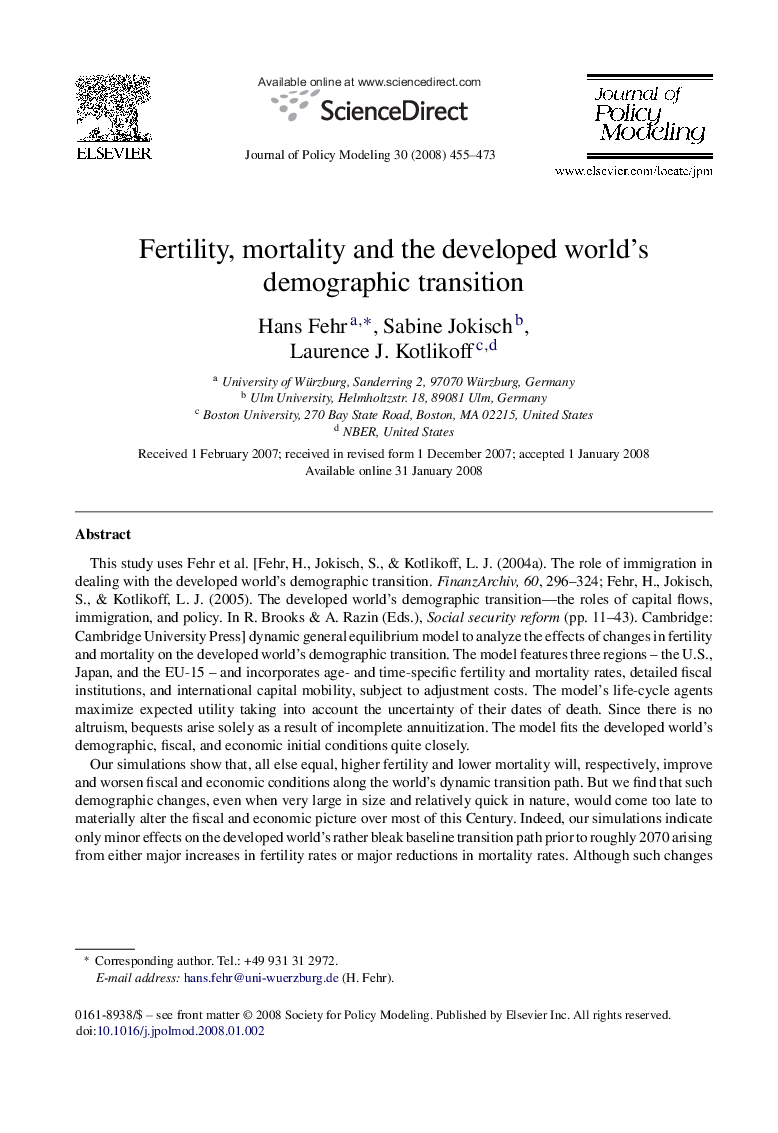| کد مقاله | کد نشریه | سال انتشار | مقاله انگلیسی | نسخه تمام متن |
|---|---|---|---|---|
| 968840 | 931669 | 2008 | 19 صفحه PDF | دانلود رایگان |

This study uses Fehr et al. [Fehr, H., Jokisch, S., & Kotlikoff, L. J. (2004a). The role of immigration in dealing with the developed world's demographic transition. FinanzArchiv, 60, 296–324; Fehr, H., Jokisch, S., & Kotlikoff, L. J. (2005). The developed world's demographic transition—the roles of capital flows, immigration, and policy. In R. Brooks & A. Razin (Eds.), Social security reform (pp. 11–43). Cambridge: Cambridge University Press] dynamic general equilibrium model to analyze the effects of changes in fertility and mortality on the developed world's demographic transition. The model features three regions – the U.S., Japan, and the EU-15 – and incorporates age- and time-specific fertility and mortality rates, detailed fiscal institutions, and international capital mobility, subject to adjustment costs. The model's life-cycle agents maximize expected utility taking into account the uncertainty of their dates of death. Since there is no altruism, bequests arise solely as a result of incomplete annuitization. The model fits the developed world's demographic, fiscal, and economic initial conditions quite closely.Our simulations show that, all else equal, higher fertility and lower mortality will, respectively, improve and worsen fiscal and economic conditions along the world's dynamic transition path. But we find that such demographic changes, even when very large in size and relatively quick in nature, would come too late to materially alter the fiscal and economic picture over most of this Century. Indeed, our simulations indicate only minor effects on the developed world's rather bleak baseline transition path prior to roughly 2070 arising from either major increases in fertility rates or major reductions in mortality rates. Although such changes have important long-run fiscal and economic effects, they occur too gradually to materially alter the short- and medium-term outcomes.
Journal: Journal of Policy Modeling - Volume 30, Issue 3, May–June 2008, Pages 455–473